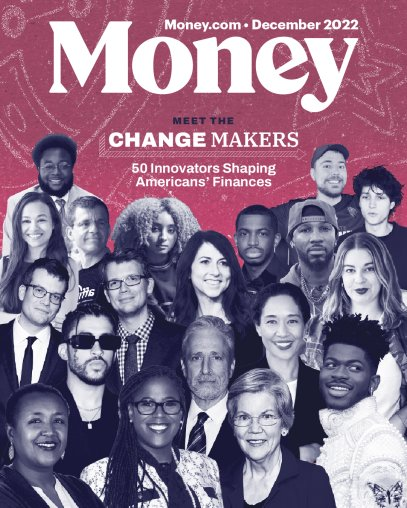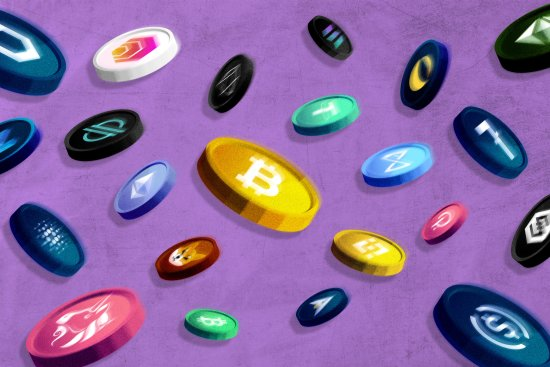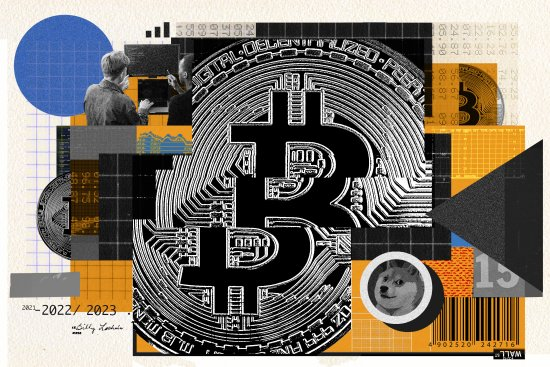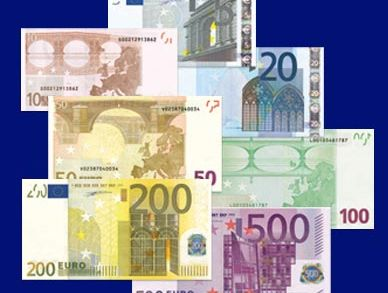
Money plays a critical role in modern society. It is a medium of exchange that allows us to buy goods and services, pay our bills, and save for the future. Without money, the world would be a very different place.
Money is a complex concept that has evolved. In ancient times, people used bartering to exchange goods and services. However, this system was inefficient, requiring a double coincidence of wants. In other words, both parties had to want what the other had to offer.
Over time, the word money has emerged as a solution to this problem. It is a standardized unit of value that can be used to buy and sell goods and services. Money comes in different forms, such as coins, banknotes, and digital currencies.
The Functions of Money
Money has three main functions: a medium of exchange, a unit of account, and a store of value. Let’s take a closer look at each of these functions.
- Medium of Exchange
Money serves as a medium of exchange, which means that it is a way to facilitate transactions. For example, if you want to buy the bank a cup of coffee, you can use the money to pay for it. Likewise, the government, bank, or coffee shop owner can use that money to buy more supplies or pay bills.
- Unit of Account
Money also serves as a unit of account, meaning it is a way to measure the value of goods and services. For example, if you want to buy a car, you can use the money to measure its value. The government or car dealer can then use that total value of money to buy more cars or pay bills.
- Store of Value
Money also serves as a store of value, meaning it can be used to save for the future. For example, saving money in a bank account can earn interest over time. This interest allows you to save for retirement, education, or other long-term goals.

The Evolution of Money
Money has evolved from bartering to digital currencies. So let’s take a closer look at some of the most significant developments in the history of our contemporary money systems.
- Bartering
Bartering was the first form of exchange used by humans. People would exchange goods and services directly without using money. However, this system was inefficient because it required a double coincidence of wants.
- Commodity Money
Commodity money is a type of money that has intrinsic value. For example, gold and silver have been used as commodity money throughout history. This system defined money as more efficient than bartering because it allowed for an easier exchange of wealth and payment of fixed dollar amounts of cash for goods and services.
- Fiat Money
Fiat money is a type of money that has no intrinsic value. Instead, it is a valuable commodity only because the government says it is. Most modern currencies, such as the US dollar and the euro, are examples of fiat money.
- Digital Currencies
Digital currencies, such as Bitcoin, are a relatively new development in the history of money. These currencies are decentralized and operate independently of governments and central banks.

The Impact of Money on Society
Money has a profound impact on society. It influences how we live, our choices, and our opportunities. Here are some of the ways money impacts society:
- Economic Growth
The money supply is a crucial driver of economic growth. It allows businesses to invest in new technologies, expand operations, and create jobs. As a result, economic growth would be impossible without the money supply, and many countries and societies would struggle to progress.
- Social Mobility
Money also plays a significant role in social mobility. It provides people with the resources they need to improve their lives and the lives of their families. For example, money can be used to pay for education, healthcare, and housing, contributing to upward mobility.
- Inequality
Unfortunately, money can also contribute to wealth inequality. Wealthy individuals and corporations often have more resources to invest and grow, which can lead to more wealth and an uneven distribution of wealth. Unfortunately, this same wealth can create a cycle of poverty that is difficult to break.
- Power Dynamics
Money can also influence power dynamics within society. Those with more money often have more influence and control over decision-making processes, which can lead to a lack of representation for those with less money.

The Psychology of Money
Money also has a significant impact on our psychology. It can influence the way we think, feel, and behave. Here are some of the ways money impacts our psychology:
- Happiness
Money can influence our happiness. Studies have shown that having enough money to cover basic needs much money, such as food, housing, and healthcare, can contribute to happiness. However, once those basic needs are met, additional money has little impact on all their money and overall satisfaction.
- Status
Money can also influence our sense of status. Those with more money often have a perceived value and higher social level, leading to feelings of superiority, purchasing power, and entitlement. Conversely, those with less money may feel inferior and powerless.
- Risk-Taking
Money can influence our willingness to take risks. Those with more money may be more willing to take risks as they have a more excellent cushion to fall back on. Conversely, those with less money may be more risk-averse, as they have less to lose.
The History and Evolution of Money
Money has been used as a medium of exchange for thousands of years. The earliest forms of money were not coins or paper currency but commodities such as salt, cattle, and shells. These commodities were used as a way of trading goods and services without the need for bartering.
Over time, coins and paper currency were developed as a more efficient way of exchanging value. The first coins were produced in the 7th century BCE in Lydia, a region of modern-day Turkey. These coins were made of electrum, a natural alloy of gold and silver, and were stamped with the image of a lion or bull.
Paper currency was first developed in China during the Tang Dynasty in the 7th century CE. These early banknotes were made of mulberry bark and had a variety of designs and denominations.
Modern money has taken on new forms, such as digital currencies and credit cards. Digital currencies like Bitcoin and Ethereum are decentralized forms of currency that allow for peer-to-peer transactions without needing a third central bank, financial institution, or authority.
Credit cards allow easy payment and convenient cash transactions without needing physical currency. These payment cards are linked to a bank account and can be used to make purchases both in cash online and in cash in-person.
The Future of Money
As technology for new currency continues to advance, the future of money is uncertain. Some experts predict that digital currencies will become more prevalent, while others believe that physical cash will remain used as a financial institution for the foreseeable future.
One thing is certain. However, the evolution of money will continue as society and technology change. As we look to the future and print money and new money, it will be important to consider the impact of new forms of money-safe currency on society and the economy.

The Functions and Characteristics of Money
Money serves several functions in an economy. These include:
Medium of exchange:
- Money is used as a medium of exchange for goods and services. It facilitates transactions and allows for the sale of value without bartering. Store of value:
- Money serves as a store of value over time. It allows individuals and businesses to save and invest for the future. Unit of account:
- Money provides a unit of account for measuring the value of goods and services. It allows for comparing prices and enables individuals and businesses to make informed decisions. Standard of deferred payment:
- Money serves as a standard of deferred payment for loans and other forms of credit. It allows for the repayment of debts over time.
Money also has several characteristics that make it effective as a medium of exchange.
These include:
- Durability: Money must be durable and able to withstand wear and tear.
- Portability: Money must be easily portable and carried from one place to another.
- Divisibility: Money must be easily divisible into smaller units to facilitate transactions of varying sizes.
- Uniformity: Money must be uniform in quality and design to promote its acceptance as a medium of exchange.
- Limited supply: Money must have a limited supply to maintain its value over time.
The Importance of Money in Society
Money plays a crucial role in modern society. It facilitates economic transactions, allows for saving and investment, and provides a means of measuring value. It is also a tool for social and political power, as those who control the money supply have significant influence over the economy and society.
As such, managing the money supply is generally accepted as a critical function of governments and central banks. The central bank uses monetary policy to manage the supply and demand for money, maintain stable prices, and promote economic growth.

The Origins of Money
The use of money can be traced back to the earliest human civilizations. In ancient times, people used a variety of objects as a medium of exchange, such as shells, beads, and precious metals like gold and silver.
The first coins were developed in the 7th century BCE in Lydia, an ancient kingdom in modern-day Turkey. These coins were made of electrum, precious metal, a natural alloy of gold and silver, and were stamped with a design to indicate their face value amount.
Over time, gold standard silver coins were spread worldwide, and other forms of currency, such as mint coins as paper money and the Central Bank of Notes central bank, were developed.
The Evolution of Money
Several factors, including the financial crisis and changes in technology, trade, and the economy, have driven the evolution of the country’s money supply.
One major milestone in the evolution of money was the development of paper money. The first paper money was developed in China during the Tang dynasty in the 7th century CE. Paper money was more convenient than coins, as it was lighter, easier to carry, and more challenging to counterfeit.
Another significant development in the evolution of the money supply was the rise of banking. Banks began as simple institutions holding deposits and providing loans but became essential players in the global economy. Banks issue loans and create credit, a vital economic activity, and growth driver.
In the modern era, money has become increasingly digitized. Electronic banking, credit cards, and mobile payments have all made it easier to make transactions without using physical currency.
The Future of Money
As technology advances, the future of money will likely be shaped by innovations. For example, cryptocurrencies like Bitcoin and Ethereum have already disrupted traditional forms of currency and may become even more prevalent.
At the same time, the rise of artificial intelligence and automation may have significant implications for money laundering and the future of work, money laundering, and the economy. For example, as jobs in money laundering are automated and traditional industries of money laundering are disrupted, new forms of currency, money laundering, and economic systems for money laundering may emerge.

Types of Money
Commodity Money: Commodity money is a physical object that has value in and of itself, such as gold or silver. In ancient times, people used shells, tobacco, and other items as commodity money. The value of commodity money is determined by the scarcity of the object and its usefulness.
Fiat Money: Fiat money is a currency that is not backed by any physical commodity but is generally accepted as legal tender or a medium of exchange because the government has declared it legal tender. The value of fiat currencies or money is based on people’s trust in the government that issues it. Most countries use fiat currency, today’s most common form of money.
Digital Currency: Digital currency, or cryptocurrency, is a virtual currency that uses cryptography to secure assets and verify transactions. Digital currencies like Bitcoin and Ethereum have gained popularity in recent years due to their decentralized nature and the security they offer.
Functions of Money
Medium of Exchange: Money coin money serves as a medium of exchange because it allows people to trade goods and services without needing a barter system. In a barter economy, people must exchange goods or services directly, which can be inefficient and impractical.
Unit of Account: Money provides a standard unit of account that allows people to compare the dollar value of fixed amounts of goods and services. For example, if a loaf of bread costs $2 and a gallon of milk costs 3 dollars, people can easily compare the relative dollar value of these items.
Store of Value: Money can be used as a store of value because it can be saved and used later to purchase goods and services. However, inflation, rising interest rates, and currency fluctuations can erode the value of money over time.

Investing and Managing Money
Investing in stocks, bonds, and other financial instruments is essential to growing and managing your money. However, to invest bad money wisely, it’s necessary to understand the basics of investing and the different types of financial products available.
Stocks: Stocks represent ownership in a company and can provide investors with capital appreciation and dividends. However, stocks are considered riskier than other financial products because their value can fluctuate widely.
Bonds: Bonds are debt securities issued by governments, private banks, or corporations, and these securities offer investors a fixed return on their investment dollars. They are considered less risky than stocks but offer a lower return.
Mutual Funds: Mutual funds are investment vehicles that pool money from many investors to buy a diversified portfolio of stocks, bonds, securities, and other financial products. They offer a lower risk profile than individual stocks because of the diversification they provide.
Exchange-Traded Funds (ETFs): ETFs are securities similar to mutual funds but traded like stocks. They offer investors the ability to invest in a diversified portfolio of assets while still being able to buy and sell shares throughout the day.
Real estate investing can provide investors with a steady income stream and the potential for capital appreciation. However, it requires significant capital and carries risks like market fluctuations and property management issues.
Managing your finances also involves creating and following a budget, establishing financial goals, and saving for retirement. Financial advisors can guide and help you create a personalized plan based on your financial situation.
Conclusion
Money is an essential component of modern society. It allows us to buy and sell goods and services, measure value, and save for the future. The evolution of money has been a complex process, from bartering to digital currencies. By understanding the functions and history of money, we can appreciate its importance in our daily lives.
CoopBusiness is a revolutionary cooperative business-building platform that empowers individuals to become entrepreneurs, business owners, and financially independent.
As a member, you’ll receive top-level business mentorship, access to our proprietary business systems, and the opportunity to access the funds you want to turn your business ideas into reality.